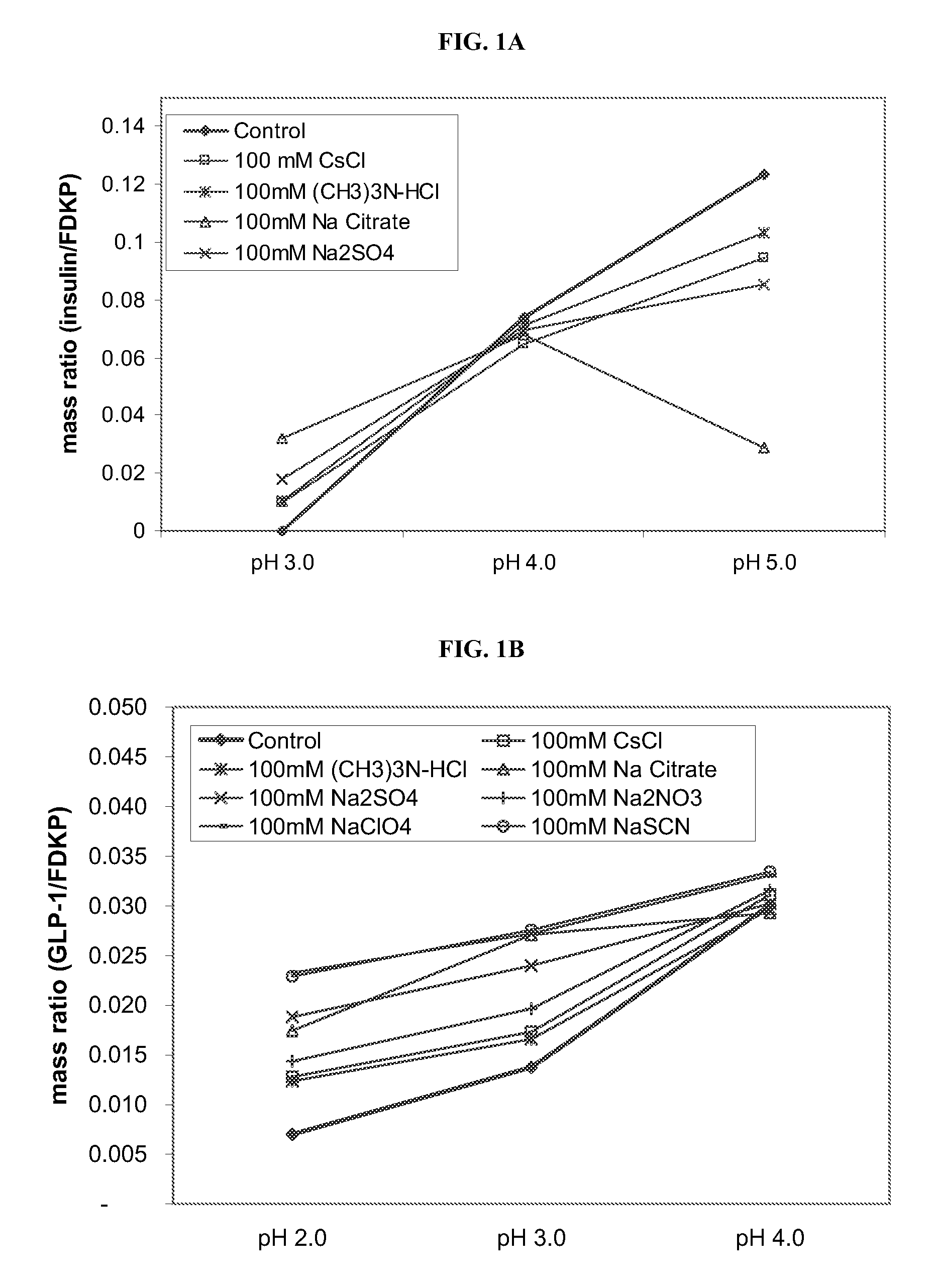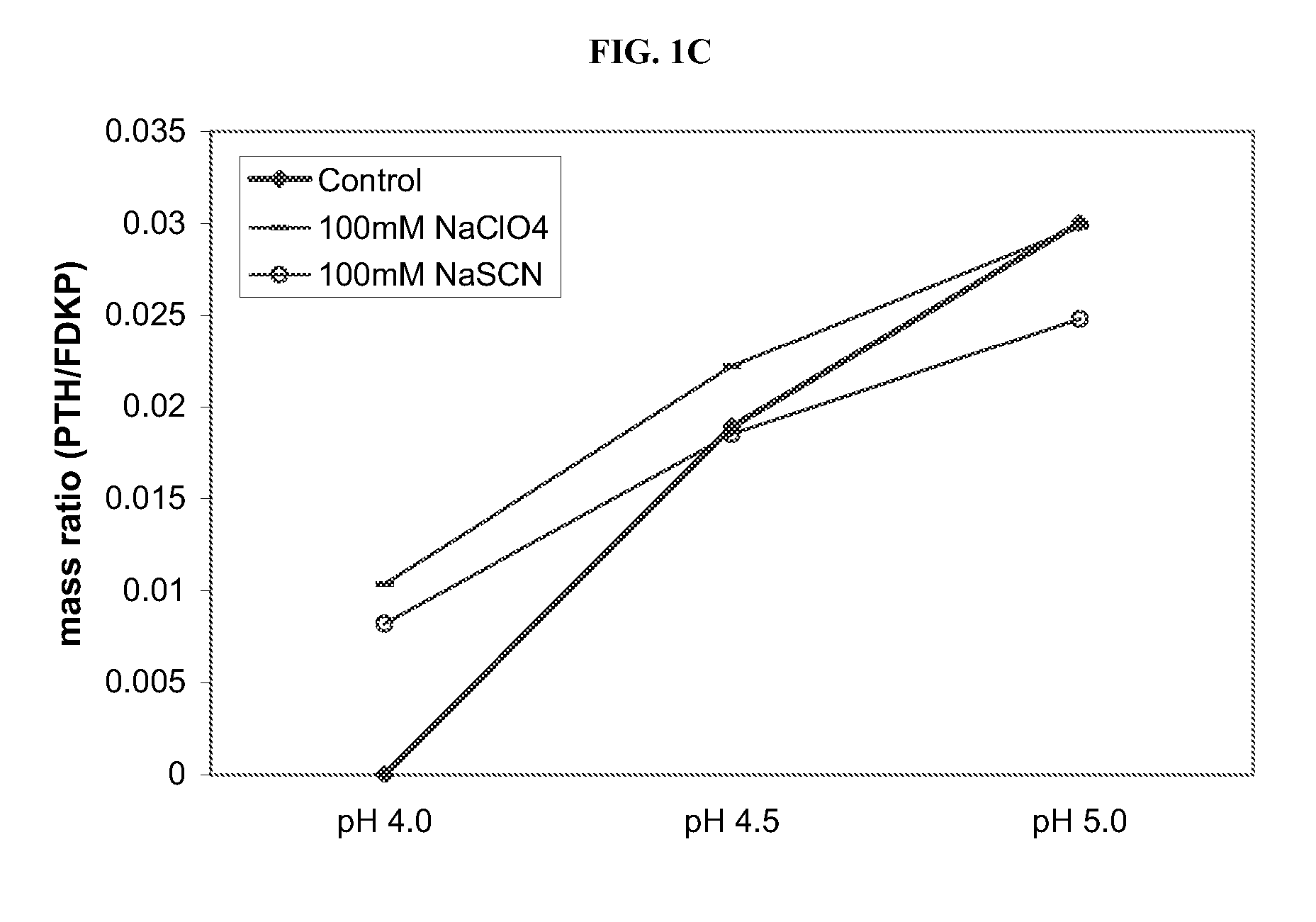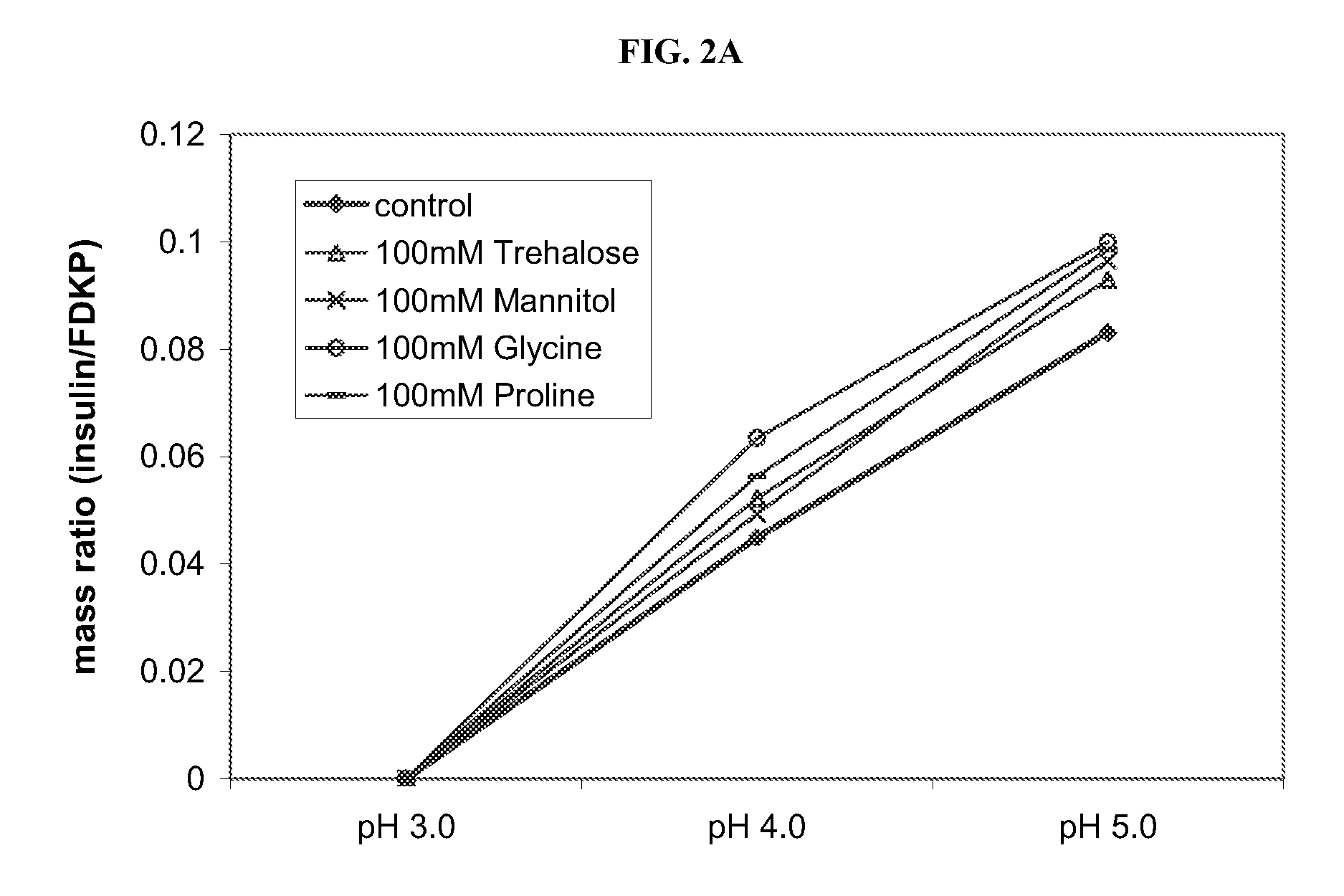Method of Drug Formulation Based on Increasing the Affinity of Active Agents for Crystalline Microparticle Surfaces
a technology of crystalline microparticles and drug formulations, applied in the direction of aerosol delivery, powder delivery, granular delivery, etc., can solve the problems of inefficient adsorption of therapeutic agents, low or variable potency, and major problems in the delivery of therapeutic agents, so as to improve the structural stability promote association, and reduce the solubility of the active agent molecule
- Summary
- Abstract
- Description
- Claims
- Application Information
AI Technical Summary
Benefits of technology
Problems solved by technology
Method used
Image
Examples
example 1
Experimental Procedure: Active Agent / FDKP Microparticle Adsorption Studies
[0052] The active agents insulin, PTH, ghrelin and GLP-1 were either purchased from American Peptide (Sunnyvale, Calif.) or AnaSpec (San Jose, Calif.), or prepared in house (MannKind Corporation, Valencia, Calif.). Aqueous samples at varying pH and at 20° C. (unless otherwise noted) were analyzed. Samples were generally prepared fresh and were mixed with the particular additive (e.g., salt, pH buffer, etc., if any), prior to the addition of FDKP microparticles.
[0053] The association of active agent with diketopiperazine (DKP) particles in suspension was evaluated by conducting adsorption studies. The parameters investigated in the adsorption studies explored the effects of electrostatic interactions, hydrogen bonding, water structure, protein flexibility, and specific salt-pairing interactions on the active agent / fumaryl diketopiperazine (FDKP) microparticle interaction. In addition, several common protein s...
example 2
Effect of Chaotropes and Kosmotropes on Adsorption of Active Agent onto FDKP Particles
[0055] Ionic species that affect the structure of water and proteins (chaotropes and kosmotropes) were studied to investigate the adsorption of active agent onto a FDKP microparticle surface by a hydrophobic mechanism (at low pH). Loading of the active agent onto FDKP particles was performed at 5 mg / mL microparticles and a GLP-1 concentration of 0.25 mg / mL (5% w / w), or a PTH concentration of 0.25 mg / mL (5% w / w), or an insulin concentration of 0.75 mg / mL (15% w / w). The concentration of the chaotrope or kosmotrope in the samples was held constant at 100 mM and the pH varied from 2.0 to 5.0. Chaotropes or kosmotropes were selected from the following: NaSCN, CsCl, Na2SO4, (CH3)3N—HCl, Na2NO3, Na Citrate, and NaClO4. The control indicates no chaotrope or kosmotrope were added.
[0056]FIGS. 1A-1C depict the loading curves for insulin, GLP-1 and PTH respectively, onto the FDKP microparticle surface as a f...
example 3
Effect of Osmolytes on Adsorption of Active Agent to FDKP Particles
[0060] To assess the importance of active agent stability on adsorption, the effect of osmolytes on the binding of active agent to FDKP particles was examined by HPLC analysis. FIGS. 2A-2C show the loading curves for insulin (FIG. 2A), GLP-1 (FIG. 2B) and ghrelin (FIG. 2C) onto FDKP particles as a function of pH in the presence of common stabilizers (osmolytes). Loading of the active agent onto FDKP microparticles was performed at 5 mg / mL of microparticles and an insulin concentration of 0.75 mg / mL (15% w / w), or a GLP-1 concentration of 0.25 mg / mL (5% w / w) or a ghrelin concentration of 0.10 mg / mL (2% w / w). The concentration of the osmolyte (stabilizer) in the samples was held constant at 100 mM and the pH varied from about 2.0 to about 5.0. The osmolytes were selected from hexylene-glycol (Hex-Gly), trehalose, glycine, PEG, TMAO, mannitol and proline; the control indicates no osmolyte.
[0061] Of the active agents st...
PUM
| Property | Measurement | Unit |
|---|---|---|
| Structure | aaaaa | aaaaa |
| Solubility (mass) | aaaaa | aaaaa |
| Flexibility | aaaaa | aaaaa |
Abstract
Description
Claims
Application Information
 Login to View More
Login to View More - R&D
- Intellectual Property
- Life Sciences
- Materials
- Tech Scout
- Unparalleled Data Quality
- Higher Quality Content
- 60% Fewer Hallucinations
Browse by: Latest US Patents, China's latest patents, Technical Efficacy Thesaurus, Application Domain, Technology Topic, Popular Technical Reports.
© 2025 PatSnap. All rights reserved.Legal|Privacy policy|Modern Slavery Act Transparency Statement|Sitemap|About US| Contact US: help@patsnap.com



